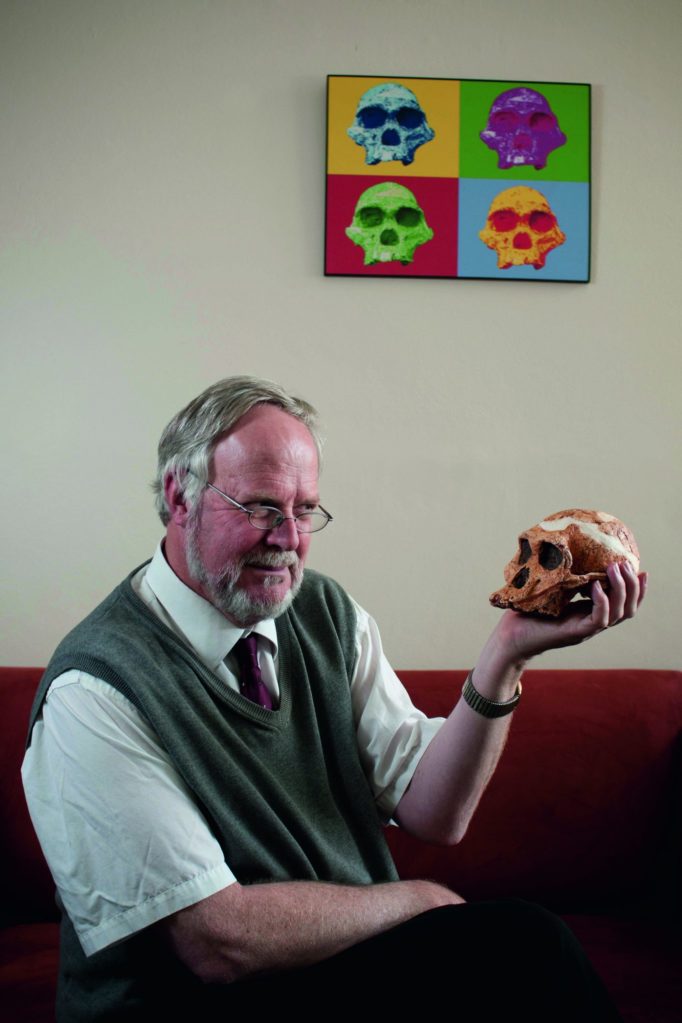Clues buried in the writings of William Shakespeare suggest that he may have partaken in the perceived ‘wisdom of the weed’. At least one Johannesburg-based scientist is convinced of it. And the proof may lie in The Bard’s Stratford grave in England.
It was while reading Sonnet 76 that Professor Francis Thackeray had a Eureka moment. The palaeo-anthropologist and director of the Institute for Human Evolution at Wits University recalls the moment during an ambitious project to read all 154 of Shakespeare’s 14-line poems in one sitting: “Shakespeare writes about ‘… invention in a noted weed’. And invention refers to creative writing, and we know that creative writers are known to enjoy the stimulation of cannabis.”
From behind his busy desk in a large office populated with casts of famous hominid skulls—among them the Taung Child and ‘Mrs Ples’—the tall, bespectacled academic proffers more clues garnered from the sonnet to support his hypothesis: “In the same sonnet, there’s reference to ‘…compounds strange’, which means strange drugs. And so, in my Eureka moment, I thought, ‘My goodness, is he making hidden reference to cannabis?’”
To further bolster his argument, Thackeray points out cannabis references in other Shakespeare works: “In other writings—for example, in Macbeth meeting the witches before he assassinates King Duncan, Shakespeare invents the word ‘assassination’. It’s derived from the (Arabic) word ‘hashashin’ – and ‘hashish’ is, of course, cannabis. It’s known that assassinations took place by assassins (sic) who got themselves high on cannabis before they executed their deadly deed.”

Loading...
The learned professor’s curiosity about The Bard’s smoking habits were first awakened after stumbling upon a book lying on a dusty shelf in the Shakespeare section of a second-hand bookshop in Hampstead, London. The book, Shakespeare’s Garden, referred to a 1920s excavation of the Stratford property, which threw up pipe bowl and stem fragments from a rubbish heap discovered there. Not one to pass up a good dig, Thackeray headed for Stratford to see the pipes for himself: “When I looked inside the pipe bowls from Shakespeare’s garden, and from other parts of Stratford, I could see that there was black residue.”
The palaeo-anthropologist, also a qualified chemist and mathematician, then got special permission to take 24 pipe fragments from Stratford to Pretoria, where he ran a chemical analysis at the narcotics laboratory in the police’s forensic lab. The gas chromatography technique used there revealed a plethora of compounds including vanilla, cinnamon and camphor, as well as cannabis. Until then, it was assumed that such pipes contained only the residues of tobacco from Virginia, which Sir Walter Raleigh had brought back to England. “They were experimenting!” exclaims the scientist excitedly. The findings led to his 2001 publication of a paper in the South African Journal of Science, which made a global impact.
Since then, Thackeray has hoped to prove his theory by examining The Bard’s remains, buried in a Stratford church next to his wife, Anne Hathaway, and their daughter. But his attempts have been thwarted curiously by Shakespeare himself—an epitaph written in the form of a curse has protected the grave for almost 400 years: “Cursed be he who moves my bones, and blessed be he who spares these stones.”
So Thackeray has proposed to carefully expose the skull and skeleton by excavating away the sediments without moving any bones. His team would then perform a laser surface scan, similar to those which have already been achieved by his institute on hominid fossils from the Cradle of Humankind. At best, he would hope to extract keratin from the hair and nails, which upon forensic analysis, would almost certainly provide conclusive proof of cannabis use.
DNA could also be extracted from a tooth, though that would be a more invasive procedure. A simple examination of The Bard’s exposed teeth would, however, reveal whether or not he was a regular pipe smoker. After deliberating over Thackeray’s proposal, the Holy Trinity Church Parochial Committee turned it down.
But for the Wits scientist, all is not lost. The church has more recently agreed to a proposal from archaeologists at the University of Birmingham to undertake an analysis which should determine simply whether there is indeed a body under the ground, without excavating. Technology such as ground penetrating radar could be employed to achieve this. Thackeray is delighted that the church has granted permission for such a preliminary exploratory study. He will be following these events closely and is optimistic that possibilities for him to do the kind of work he has been proposing may emerge.
The scientist first visited the church as a seven-year-old boy with his parents. Standing in the chancel by the grave, he recalls: “The thought did pass my mind. Wouldn’t it be interesting to look at the skeleton of Shakespeare?” It’s been a long wait for Thackeray and his collaborators, though he brushes it off: “We’re patient. I’m a palaeontologist. We can wait.”
Loading...
